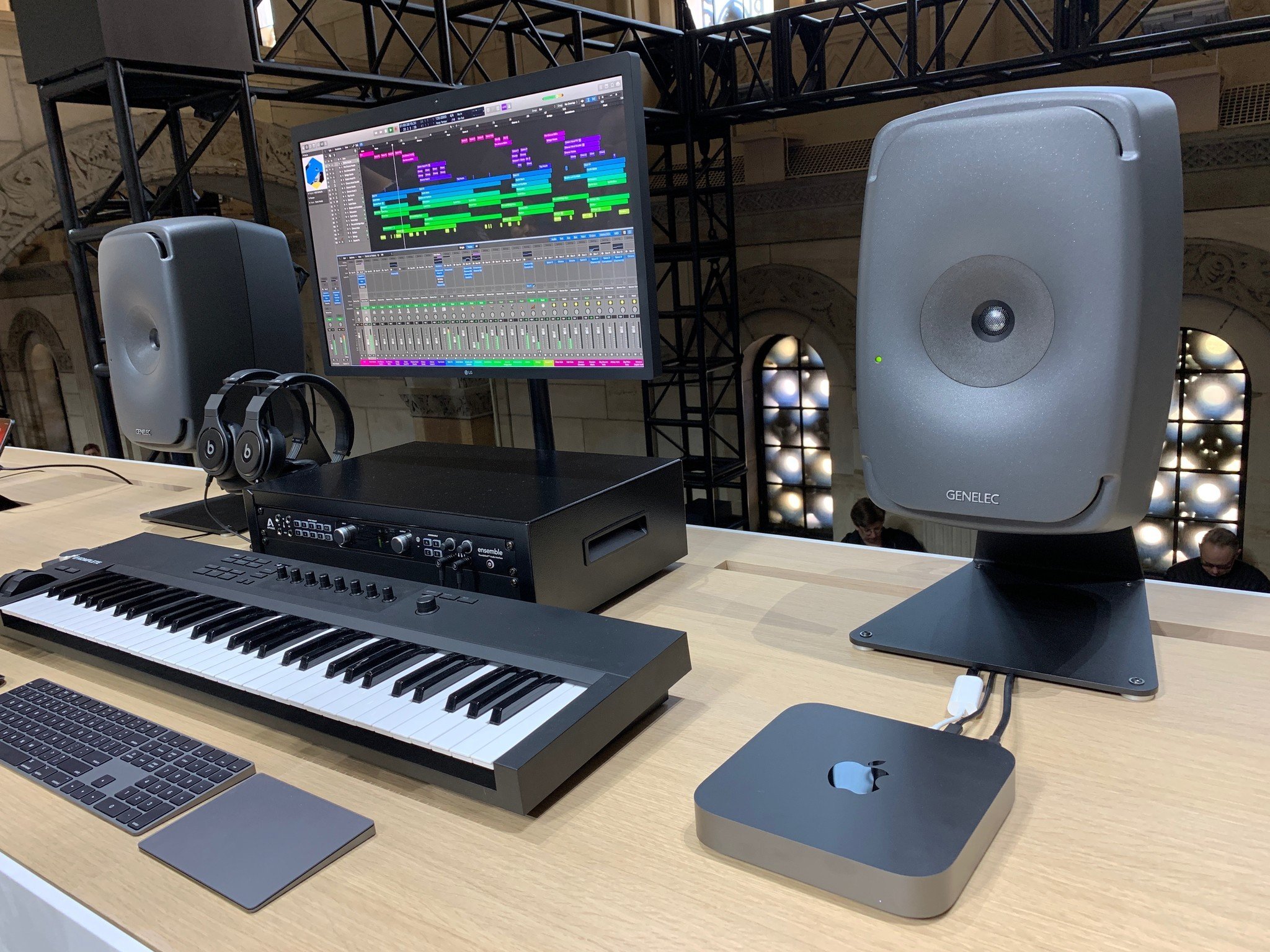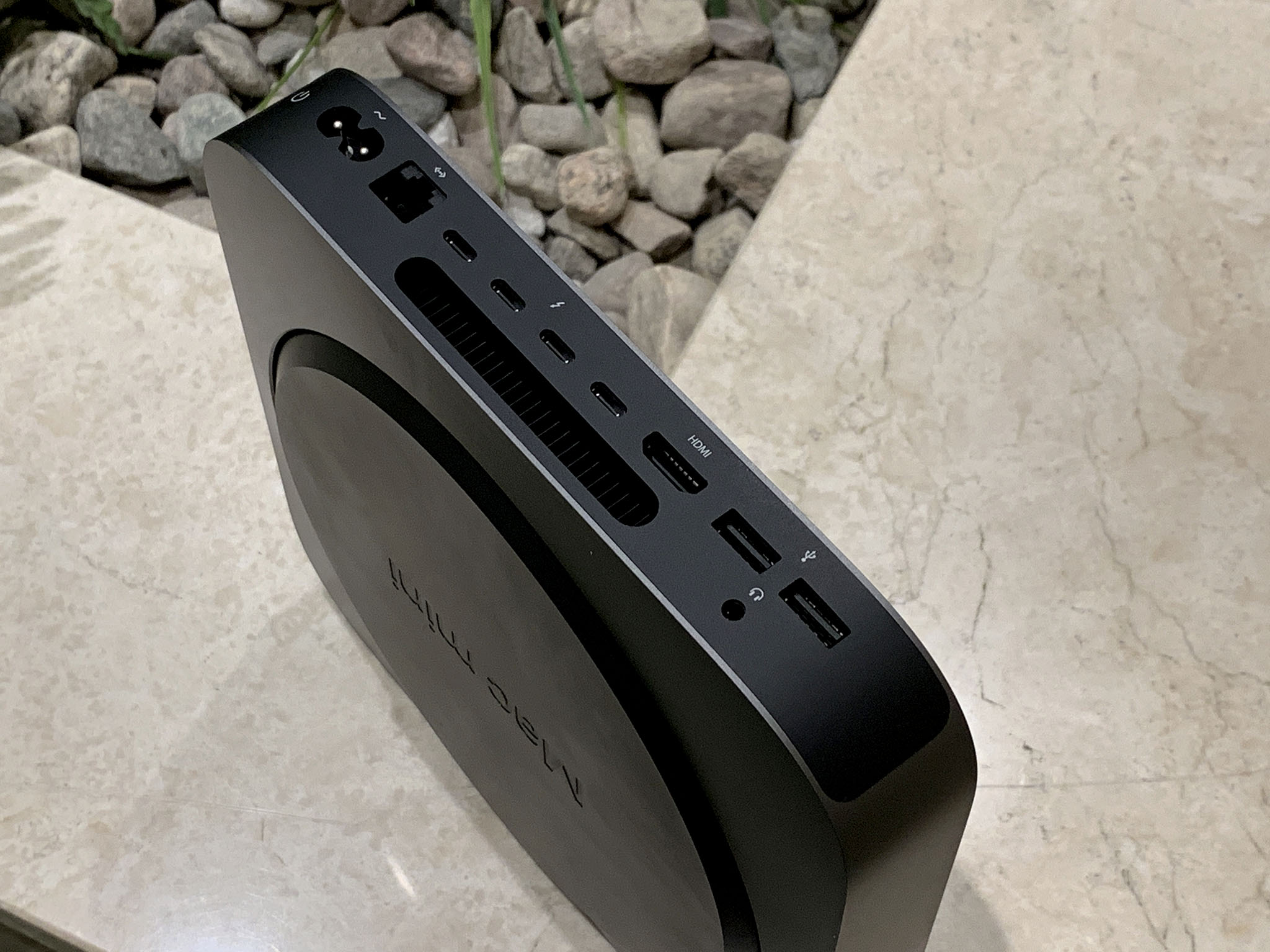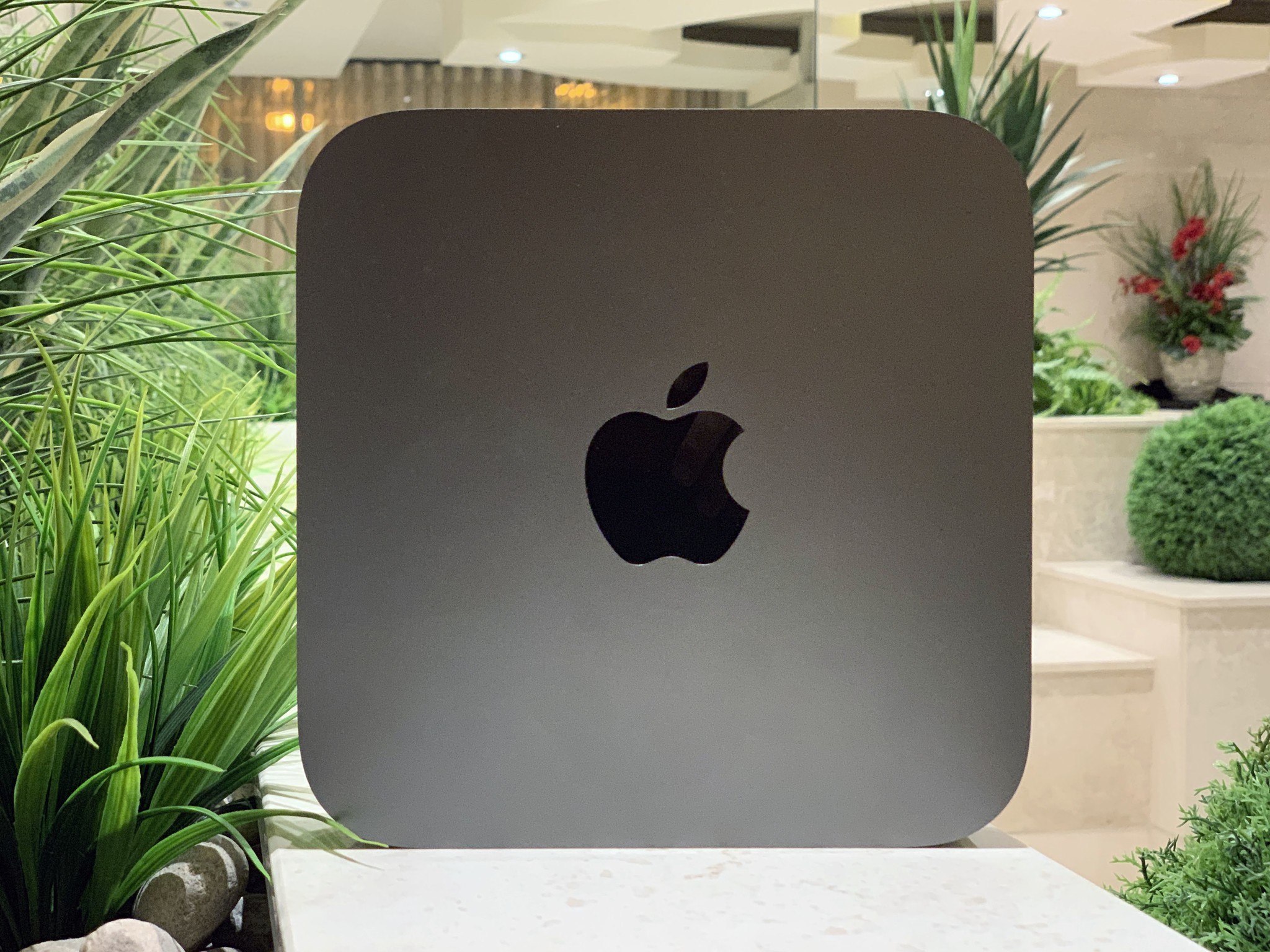Maybe Apple always intended to update the Mac mini but got distracted by more urgent projects? Maybe Apple was waiting to do something... different with the mini, but it was taking too long? Or maybe Apple never meant to update the mini at all but changed its mind after seeing just how much its customers missed the littlest Mac?
I don't know. But I do know this: After four long, long years, Apple has finally updated the Mac mini.
But is it the update everyone's been waiting for?

Price: $799+Bottom line: This is a Mac mini that will appeal to the biggest section of the Mac mini market — pros who don't need it for everything, but do need it for very specific things, and find its usability and utility more than justifies its price, especially when it comes to the software it can run and the uptime it can keep.For those Mac mini lovers, Apple had them at new. Wait, who am I kidding? Apple had them at at space gray. Still kidding. Apple had them at "pro".
For people who want:
- Intel 8th generation Coffee Lake processors
- Small home or server computer that can fit anywhere
- Up to 64GB of RAM, 2TB of SSD
- eGPU and Thunderbolt 3 expandability
- Apple T2 Security
- A new Mac mini
Not for people who want:
- Intel Xeon processors
- All-in-one like iMac
- Sub-$500 starting price
- Nvidia (or even AMD!) internal graphics
- User-replaceable everything
- A new Mac Pro
Mac mini (2018) Design
Now it comes in space black.
What? Seriously. That's it. And that's great.
Yeah, I saw some people complaining that it was ... wait for it ... boring. Well, those aren't the people who want or need it, and if Apple had made it less boring by spinning into an octagon or something, those wouldn't be the people suddenly buying it or paying Apple back for quote-un-quote innovating themselves into a bad product just to appease the armchair internet designers.
You never change just to be different. That's desperate. You change to be better. Would changing the Mac mini's design make it better?
iMore offers spot-on advice and guidance from our team of experts, with decades of Apple device experience to lean on. Learn more with iMore!
Not for everyone already using one, especially in stacks, most especially in racks. By keeping the same design, those people — the core of the modern Mac mini customer base — can simply pull old units out of their setups and push new ones in.
New, space gray ones. And that's way more important than any internet hot take.
You can get the mini with Apple's matching space gray Magic Keyboard, Magic Trackpad and/or Magic Mouse. (I vastly prefer the trackpad to the mouse.) You can also attach it to the LG Ultrafine 5K display that Apple sells, if you want to go all in.
The beauty of the Mac mini, though, is that you don't have to use anything Apple sells. You can hook it up just as easily to any keyboard, mouse, trackpad, and display — over Thunderbolt 3, USB-C, or HDMI — that you like. Including the upcoming Apple Pro Display the company has teased for 2019.
Mac mini (2018) Processors
I'm not going to waste any time on how much faster the new Mac mini is compared to the previous one. That's can be useful and important when it's generation-over-generation. When it's generation-over-four-generation, it's... not that useful.

What's more important that the update is that the Mac mini has been updated. From Intel's 4th generation Haswell architecture to its 8th generation Coffee Lake, you can now get it with:
- Quad-core i3 at 3.6Ghz and 6MB of shared L3 cache.
- 6-core i5 at 3.0Ghz base and 4.1Ghz turbo frequencies and 9MB of L3.
- 6-core i7 at 3.2HGz base and 4.6GHz turbo frequencies and 12MB of L3.
All cooled by new thermal architecture with a bigger fan, expanded vents, and redesigned power supply.
It's no new Mac Pro but it's not meant to be. It's for everything you don't need a Mac mini for. Either singularly for a lighter or more flexible or diverse workload, or in stacks or racks for massively parallel or shared workloads.
Apple's current showcase is Compressor. Hit a button and one or more Mac minis pick up your encoding load, letting you do something else while they chew through the HEVC.
That's thanks to Apple's custom T2 Security Chip, which, turns out, isn't just for security. Rumored to be based on the A10 Fusion found in iPhone 7, and running something called BridgeOS, it can take the custom encode blocks and use them to handle video better than the Intel silicon can do alone.
That's sort of the story of Apple's Mac line right now. As Intel slows to a crawl in its attempts to get to 10 nanometer, and once again throws cores at a process problem, Apple is literally architecting circles around them.
Be it for secure boot, real-time AES-256 encryption, unified controller architecture, even a fairly recent iPhone-class image signal processor.
Like I mentioned in the MacBook Air review, adding custom Mac silicon to Intel gives Apple an advantage no other vendor enjoys.
And, you know, in some others ways, the Mac mini needs it.
Graphics are limited to Intel UHD 630. If you want anything more, you'll have to hang an eGPU or several off the back.
Mac mini (2018) Memory & Storage
You want memory in your new Mac mini? How's 8GB. Ok, yeah. I get it. 16GB? More? How about 32GB. No, wait. 64 freaking GB of 2666 — the megahertz of the beast — DDR4 RAM in SO-DIMMS.

If you really are looking for an inexpensive desktop Mac, you can start on the smaller cheaper end. But if you're looking to max out your Mac server, you can go higher end than ever.
And because they're socketed, you can upgrade them if and when you want to or have to. Well, if you're an iFixit-class wiz, you can upgrade them. Otherwise, you can take them to your local Apple Store or certified service center and have them upgraded for you.
It means, as you or your business grows, your Mac mini can grow with you, which helps extend its useful life and its value.
Not user-upgradable is the storage. It's PCIe Flash soldered right on the board, and Apple locks it down to the T2 chip for the secure boot and real-time reasons I just outlined.
So, buy what you need up front: 128GB, 256GB, 512GB, 500GB, 1TB, or 2TB.
Yeah, that's a lot of options, but as we've seen with iPhone and iPad, when Apple doesn't offer every step up the ladder, some people inevitably get pissy.
You can hang more storage outside but no matter how fast external is, it's still external, so I'd recommend getting enough internal to suit not just your application needs but your baseline documents as well. Keep your live stuff live.
Mac mini (2018) Connectivity
I mentioned external graphics and storage before. My favorite thing about the Mac mini, old and new, is that it has a ton of I/O for all that stuff. Four USB-C / Thunderbolt 3 ports for starters, with two independent controllers. That means each port can provide full 40 GBPs bandwidth. That's enough to drive all your eGPUs, external drives, and RAID arrays.

It can also drive two 4K displays or one 5K display at 10bpc and 60Hz.
There are also two USB-A 3.1 ports for your old-school connections, HDMI 2.0 for your video production or home theater. There's Gigabit or optional 10Gb Ethernet for the fastest networking possible. And there's even a 3.5mm jack for headphones for audio work. Yeah, the Mac hasn't deleted, at least not yet.
But, um… digital audio mini-jack, IR receiver, and SDHC card reader have all been deleted. Personally, I won't morn the first two much, though I'm sure DJs and universal remote aficionados will, but inconveniently located on the back as it was, not having SDHC on a desktop otherwise so well suited for photography and camera work is beyond frustrating. At least for me.
In some ways, it makes the Mac mini every bit as pro as Apple's best desktop and more than any current notebook.
Mac mini (2018) Recycled Aluminum
The biggest and best surprise coming out of Apple's Mac mini announcement wasn't the space gray and wasn't even the 64GB option or the SO-DIMMS.
It was the recycled aluminum. Not that you'd know it just by looking. To the eye, it looks exactly the same as the 6000 series, bead-blasted aluminum Apple's been carving computers out of since the original unibody, given or take the precise alloy.
Like I said in my MacBook Air review, it's only when Apple tells you that their metallurgical team has found a way to reuse the excess aluminum alloy carved off of devices like the new iPad Pro to make devices like the new Mac mini and MacBook Air that you do a double take. Maybe even a spit take.
And that's huge. Not just because no one is growing any more aluminum supply on trees, but because we don't yet have other plants to escape to if we run out here, or just smelt the planet so toxic we need run out of here.
So, combined with the new carbon-free smelting process Apple announced earlier this year, not having to smelt any new aluminum for new Mac mini's or Airs is nothing short of game-changing.
I hope every vendor in every industry works this hard on not just making better things but making things better.
Mac mini (2018) Conclusion
Mac mini was the original switcher machine for everyone ready to dump their beige box for an aluminum round rec. Mouse, keyboard, and display not included.

Apple took it all the way to four cores and 2 TBs before sliding back to dual core and then... nothing. For four long years.
Now it's back, but while it was gone the world changed. Switchers either became the switched or decided they'd prefer switching to a notebook where the trackpad, keyboard, and display were included.
So where does that leave the Mac mini, both as a new model and in general?
It's still for some switchers, certainly, but increasingly for pros. Pros who need a machine not with a 5K display or Xeon chipset, but with macOS, running quietly, reliably, on or under a desk, in a home theater setup, on stage, in the server room, and yeah, in stacks and sometimes even in massive racks.
And, for them, a mini as pro as its space black anodization implies is exactly what they want. Especially when, even at a higher price, it's still less expensive than any Mac notebook.
But, yeah, that higher price.
Mac mini debuted at $499 to appeal to switchers in a time where desktops hadn't given as much way to notebooks as they have today. It did go up to $599 in the past but then it dropped back to $499 a year later.
Now, it starts at $799 and goes up from there. Way up, if you really need to add all the options. But, then, people buying $4999 servers aren't buying $499 entry-levels.
That there's an option that high, but not that low, should tell us everything about how and who Apple sees as the current Mac mini market and customer.
Still, I wish there was something more accessible, something at $499 or even $599. Given the parts Apple's using, it's hard to see where or what to trim.
For mobile, Apple's solved this with a just-over $300 iPad. For desktop, I wonder if they could or would do the same at some point? Something a little more than an Apple TV for a little less?
So, is this the Mac mini we've all been waiting for? Yes and no. It's not a bold new take on the original switcher or re-imagining of the desktop for the post-Intel world.
It's not even really entry level anymore, based on the price, except compared to every other Mac.
It may be a placeholder, it could be a resurrection, but it could also be pragmatic. Most Macs sold are notebooks, not desktops, and most desktops sold are iMacs, not Mac minis.
But this is exactly the type of Mac mini that will appeal to the biggest section of the Mac mini market — pros who don't need it for everything, but do need it for very specific things, and find its usability and utility more than justifies its price, especially when it comes to the software it can run and the uptime it can keep.
For those Mac mini lovers, Apple had them at new. Wait, who am I kidding? Apple had them at at space gray. Still kidding. Apple had them at "pro".
For me, I'm not sure yet. I just haven't had the new Mac mini for enough time to put it through enough paces to see what it really can or can't do. That's exactly what I'll be doing over the next few weeks, with everything from home theater to home server, Final Cut Pro X to ... well ... you tell me.
What do you want to see tested?

Price: $799+Bottom line: This is a Mac mini that will appeal to the biggest section of the Mac mini market — pros who don't need it for everything, but do need it for very specific things, and find its usability and utility more than justifies its price, especially when it comes to the software it can run and the uptime it can keep.For those Mac mini lovers, Apple had them at new. Wait, who am I kidding? Apple had them at at space gray. Still kidding. Apple had them at "pro".

Rene Ritchie is one of the most respected Apple analysts in the business, reaching a combined audience of over 40 million readers a month. His YouTube channel, Vector, has over 90 thousand subscribers and 14 million views and his podcasts, including Debug, have been downloaded over 20 million times. He also regularly co-hosts MacBreak Weekly for the TWiT network and co-hosted CES Live! and Talk Mobile. Based in Montreal, Rene is a former director of product marketing, web developer, and graphic designer. He's authored several books and appeared on numerous television and radio segments to discuss Apple and the technology industry. When not working, he likes to cook, grapple, and spend time with his friends and family.

